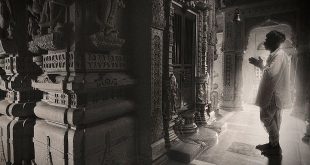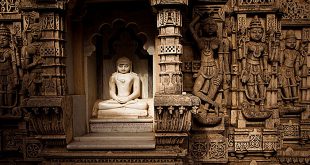What are Baisakhi Customs and Rituals? The harvest festival of Baisakhi is celebrated with pomp and gaiety across the vibrant state of Punjab. It falls on the first day of the Indian calendar month, Vaishakh, which is usually April 13. Apart from being a harvest festival, it holds a special significance in the Sikh community, because it commemorates the establishment of the Khalsa (pure) order for the Sikhs. In Punjab, major activities are concentrated on the prayers conducted in Gurdwaras – the Sikh place of worship. Apart from prayers in Gurdwara, Baisakhi is celebrated as an energetic festival in the open fields of Punjab, with the colorful performances of gidda and bhangra dancers. Learn more about the customs associated with the celebration of Baisakhi, in the article.
Baisakhi Customs and Rituals:
On the occasion of Baisakhi, all the gurudwaras across India hold prayer meetings. Guru Granth Sahib, the Holy Book of Sikhs, is ceremonially taken out, symbolically bathed with milk and water and placed on its throne. The book is then read out to the congregation of the gurudwara. Thereafter, the five priests (panch pyare) chant verses from the Holy Book. After chanting of the verses, Amrita (holy nectar), prepared in an iron vessel, is distributed among the devotees. The devotees sip the amrita five time and take a vow to work for fellowship – the Khalsa Panth.
Religious songs (kirtans) are sung after the amrita is sipped by the devotees. Later, Guru Granth Sahib is taken out in a procession, symbolizing the journey made by the five fearless devotees from their homes to Anandpur, to be baptized by Guru Gobind Singh. Traditional Punjabi folk dances – the Giddha and Bhangra – and mock duels are performed during the procession. The parade is typically Punjabi, with colorful drummers, bands playing religious tunes, people singing holy songs, and men swinging swords.
Loud Sikh chants such as ‘Bole so nihal!’ ‘Deg teg fateh!’ and rhythmic chants of ‘Sat nam’ and ‘Wahe guru’ ring out from the middle of the singing and drumming. Some men may wear the headgear (bana) of Guru Nanak, while others that of Guru Gobind Singh. At noon, the Karah Prasad or sweetened semolina is offered to the Guru to seek his blessings. Thereafter, the Prasad is distributed among the devotees gathered at the congregation. The ceremony culminates with a special guru-ka-langar or the community lunch. People sit down in rows, with their heads covered, as volunteers serve them with vegetarian meal.
The farmers in Punjab celebrate Baisakhi with fun and fervor, as it is their harvest festival. The energetic performance of bhangra and gidda dance fills the atmosphere with the festive spirit, which is reflected from the eyes of the people. Women clad themselves in their traditional gidda dress, while men wear the customary attire for bhangra. They dance to the beat of dhol, in a very joyful atmosphere. The lush green farms, with fruits, pulses and vegetables ready to be harvested, set the backdrop for the vibrant festival of Baisakhi, in Punjab.
 Kids Portal For Parents India Kids Network
Kids Portal For Parents India Kids Network







